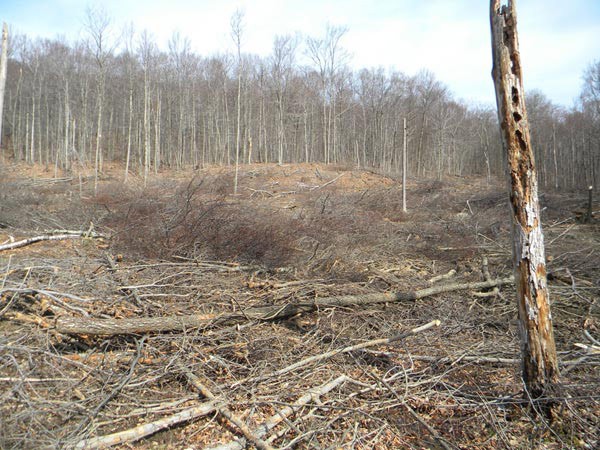Managing marginal timberland has always been a challenge, which is why forest landowners are such strong advocates for healthy low-grade wood markets. Good timber is valuable – always has been and probably always will be. But low-quality trees generate little, if any, return.
A good chunk of our tree farm falls into the marginal category. Some of these woods were sheep farm a century ago and just grew back ugly. Some is former timber company land that was high-graded. (The valuable trees were cut, the poor trees were spared.) The maybe 25-acre chunk we’ve been working in lately is dominated by red maple, poorly-formed black birch, and lots and lots of diseased beech. There’s very little sawlog potential.
Nor is the stand particularly valuable as wildlife habitat. The diseased beech does produce some mast, and it is woods, which is better than asphalt from an animal’s perspective, for sure. But most of the trees are even aged -- probably between 50 and 80 years old – and they’re surrounded by hundreds of acres of pretty much the same kind of not-very-structurally-diverse forest. Since different animals favor different niches, the cliff-notes version of how to manage for “wildlife” (a comically unspecific term, I know) is to provide diversity on both a stand and a landscape scale. Looking at the big picture, the back of this mountain is comprised of 3,500 acres of Forest Service land that will probably be lightly harvested, if it’s harvested at all, going forward. The front of the mountain is a hodgepodge of woodlots that are similarly aged and have been selectively harvested since people settled here. What the mountain is missing is young woods.
And so a clearcut – or a series of clearcuts – seems intensely logical. We figured that if we made the opening(s) big enough – say 10 or 15 acres – we might let enough light in to avoid having the whole understory overtaken by beech and/or hayscented fern – two native invasives we’re dealing with that thrive in partial shade. We’d leave some oak seed trees, and all the tops and slash to help limit deer browse of the regenerating seedlings. We consulted with Katie Manaras from Audubon Vermont, who came down and walked around the woods with us. Katie is a conservation biologist who’s a part of Audubon’s Forest Bird Initiative, a program where Audubon works with foresters to integrate songbird habitat management into their management plans and silvicultural prescriptions. We told her about our challenges and our plan. She told us about the songbirds in our woods and the pros and cons of our plan, which by in large fit in nicely with what Audubon is promoting. (They suggest 3-5%, or 75-125 acres in a 2,500 acre landscape, in young forest conditions at any one time.)
So then we just had to figure out how we could afford to make a clearcut, which brings us back to the point where the good intentions all of us forest landowners have meet economic realities. I’m on a deadline, so we’ll pick this up in the next blog.



Discussion *